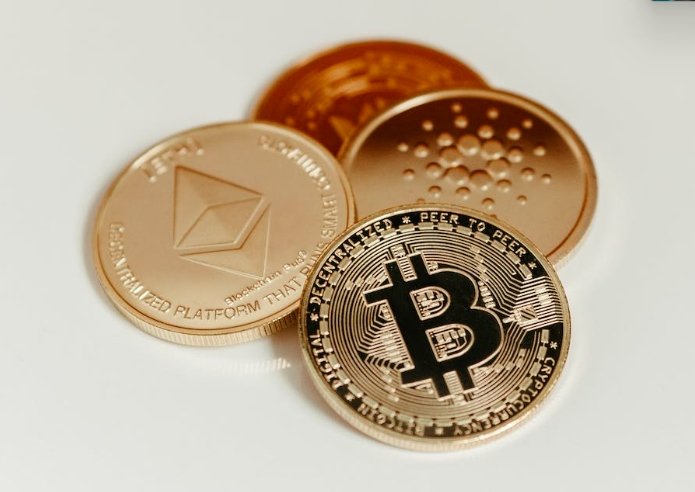Blockchain technology is revolutionizing the gaming industry, allowing players to securely own and trade digital assets in the form of non-fungible tokens (NFTs). Blockchain technology is a decentralized, digital ledger system that uses cryptographic techniques to securely store transaction records. It is a secure, immutable and transparent way of recording data that is not controlled by any central authority.
The use of blockchain technology in gaming has been around for over a decade. Initially, blockchain was used in the gaming industry to secure digital currencies and tokens, allowing for greater transparency and accountability for users. More recently, blockchain technology has been used to create digital collectibles and NFTs, which are non-fungible tokens that represent unique digital assets. NFTs are cryptographically unique, meaning that each NFT is unique and cannot be replicated. This has allowed players to own and trade digital collectibles, such as in-game items, skins, and art. These digital items can be bought, sold, and traded on blockchain-based marketplaces, and are secured by the blockchain’s immutable ledger system.

NFTs have become incredibly popular in the gaming industry, as they provide players with a secure and transparent way to own, trade, and monetize digital collectibles. Furthermore, NFTs have opened up new possibilities for game developers, as they can now create entire economies based on digital collectibles. As the use of blockchain technology in gaming continues to grow, it is likely that we will see a rise in the use of NFTs and digital collectibles.
The Benefits of Blockchain in Gaming
Blockchain technology provides a number of advantages to the gaming industry. By utilizing blockchain technology, developers can improve the security, transparency, decentralization, user control, and eliminate fraud and duplication. All of these benefits can have a positive impact on the gaming industry.
Increased Security and Transparency:
One of the major benefits of blockchain technology is the increased security and transparency it provides. By using blockchain, developers can create a secure and transparent gaming platform. This enables gamers to trust the platform and keep their data safe. Additionally, blockchain technology also allows developers to create user profiles that are private and secure. This allows gamers to protect their personal data and ensure that it is not misused or stolen.
Decentralization and User Control:
Another benefit of blockchain technology is the decentralization and user control it provides. With blockchain, developers can create a decentralized gaming platform that allows gamers to have more control over their gaming experience. This means that gamers can choose which games they want to participate in and how they want to play them. This feature also allows gamers to have a more secure and fair gaming experience, as all transactions are recorded on the blockchain and can be easily verified.
Elimination of Fraud and Duplication:
Finally, blockchain technology also provides the benefit of eliminating fraud and duplication. By using blockchain, developers can create an immutable ledger that records all transactions and prevents any double spending or fraud. This feature allows developers to ensure that all gaming transactions are secure and that there is no risk of fraud or duplication.
Digital Collectibles: What Are They?
Definition of Digital Collectibles
Digital collectibles are virtual items that are secured and verified through blockchain technology. These digital items can be bought, sold, or traded for other digital or physical items. They are similar to physical collectibles such as trading cards, stamps, comic books, etc. but are unique in that they exist only in the digital world.
Types of Digital Collectibles
Digital collectibles come in a variety of forms and can include virtual items such as game characters, art, music, and even cryptocurrency. Some of the most popular digital collectibles are CryptoKitties, CryptoPunks, and CryptoCelebrities. These digital collectibles are popular because they are scarce, unique, and can be traded for other digital and physical items.
Comparison with Physical Collectibles
When compared to physical collectibles, digital collectibles offer many advantages. They are much easier to store, transport, and trade. They are often cheaper, as there are no shipping costs or storage costs involved. In addition, digital collectibles are often much more scarce and unique than physical collectibles, making them a desirable item for collectors.
Benefits of Digital Collectibles
• Digital collectibles are easily accessible and can be bought, sold, and traded with ease.
• They are less expensive to buy, store, and transport.
• Digital collectibles are often much more scarce and unique than physical collectibles.
• They can be a great investment as they may increase in value over time.
• Digital collectibles can be used as a form of currency or as an asset to trade for other digital or physical items.
Tips for Collecting Digital Collectibles
• Research the item you are interested in buying to make sure it has potential for growth.
• Buy from reputable sources to ensure you are getting a legitimate item.
• Consider the item’s scarcity and uniqueness when deciding whether or not to buy.
• Keep track of the market value of the item you are interested in to ensure you are getting a good deal.
• Monitor the digital collectibles market to stay up to date on the latest trends and developments.
NFTs and their Role in Gaming
Definition of NFTs
Non-Fungible Tokens (NFTs) are digital tokens that are non-interchangeable. They are unique and cannot be replaced by any other token. They are based on blockchain technology, which is a distributed ledger technology (DLT) that allows the secure and immutable storage of information. NFTs are a type of cryptographic asset that have unique characteristics that make them more valuable than other digital assets.
How NFTs Work
NFTs are created on a blockchain, which is a secure and immutable ledger. Every NFT is unique and has its own set of attributes, such as its owner, its scarcity, its value, and its associated digital asset. The blockchain stores these attributes in a permanent, unchangeable manner. Once an NFT is created, it can be traded or exchanged for another digital asset.
Examples of NFTs in Gaming
NFTs are becoming increasingly popular in gaming, especially in the form of virtual items. These items can be used to power virtual worlds, create unique characters and avatars, or even unlock special in-game rewards. For example, in the popular game CryptoKitties, players can buy, breed, and trade virtual cats that are each unique and have their own set of attributes and characteristics.
Other gaming platforms such as Gods Unchained and Axie Infinity also allow players to use NFTs to purchase, collect, and trade virtual items. For example, in Axie Infinity, players can use NFTs to purchase and trade virtual monsters called Axies. NFTs can also be used to unlock special in-game rewards, such as exclusive skins or access to special events.
Benefits:
• NFTs can be used to purchase, collect, and trade virtual items in gaming.
• NFTs are secure and immutable, meaning that their attributes are permanently stored on the blockchain.
• NFTs are uniquely identifiable, meaning that they are one-of-a-kind and cannot be replaced by any other token.
• NFTs can be used to unlock special in-game rewards, such as exclusive skins or access to special events.
Tips:
• Research the different types of NFTs available and determine which ones are best suited for your gaming needs.
• Ensure that the platform you are using is secure and reliable.
• Be aware of the market value of the NFTs you are trading and only trade with reputable sources.
• Ensure that you are only trading NFTs that are legally owned and not stolen or counterfeit.
The Impact of NFTs on Gaming Industry
NFTs, or non-fungible tokens, are digital assets that are unique and not interchangeable. They are stored on a blockchain and can be used to represent a digital asset such as a game item, artwork, or even a virtual world. The gaming industry is one of the most affected industries by the emergence of NFTs. The ability to own digital assets and trade them with others has revolutionized the way gamers play, develop and collect games.
Changes in Ownership and Value
NFTs have changed the way gamers view ownership and value of digital assets. Before NFTs, digital assets were not seen as valuable, as they could not be owned and were not transferable. With the emergence of NFTs, gamers can now own digital assets, and can trade them with other gamers or collectors. This has increased the value of digital assets, as they can now be sold and traded for real money. This has also opened up a whole new market for developers to monetize their games.
New Business Models for Developers
NFTs have provided developers with a new way to monetize their games. Developers can now create unique digital assets that are stored on a blockchain and are owned by gamers. These assets can be sold and traded, creating a new revenue stream for the developer. This has opened up the opportunity for developers to offer new in-game experiences to gamers, such as special items, weapons, and power-ups, as well as creating a new market for collectors and investors.
Opportunities for Gamers and Collectors
NFTs have opened up a whole new world of opportunities for gamers and collectors. For gamers, it has created a new way to experience games, as they can now own and trade digital assets that have real value. For collectors, it has created a new market to invest in and potentially make money from. For both gamers and collectors, it has opened up the opportunity to create a community of like-minded people who share a passion for gaming and collecting.
Benefits:
• Ownership and value of digital assets has increased
• New business models for developers to monetize their games
• New opportunities for gamers and collectors to experience and invest in games
• The ability to create a community of like-minded people who share a passion for gaming and collecting Tips:
• Spend time researching the different types of NFTs available and the different platforms they are available on
• Monitor the market to get a better understanding of the current prices of NFTs
• Participate in forums and communities to stay up to date with news and developments in the NFT space
• Invest in a wallet to securely store your NFTs
The Challenges and Criticisms of NFTs in Gaming
Environmental Concerns: The increased demand for NFTs has led to a proportionate rise in energy consumption. The process of minting and verifying these tokens is highly energy intensive, leading to major environmental concerns. The process of mining and verifying these tokens requires large amounts of electricity and computer power, which can lead to the emission of considerable amount of carbon dioxide.
Exclusivity and Elitism: The current pricing structure of NFTs means that it is only accessible to those with the financial resources to purchase them. This creates a two-tier system where those with the resources to purchase and hold these tokens are able to reap the rewards, while those without the resources are unable to access the same benefits.
Legal and Ethical Issues: There are a number of legal and ethical issues that arise from the use of NFTs in gaming, due to the fact that the tokens are often used as a form of currency to purchase virtual goods and services. The nature of these transactions means that there is a risk of fraud and money laundering, as well as a lack of consumer protection. In addition, there are also concerns about the potential exploitation of players, due to the unregulated nature of these transactions.
Benefits:
• NFTs provide an effective way to monetize gaming content, allowing developers to generate revenue from their creations.
• NFTs can be used to create new forms of gameplay, allowing players to interact with games in a variety of ways.
• NFTs can provide a secure way to store and transfer assets, eliminating the need for third-party services.
Tips:
• Be aware of the environmental impacts of NFTs and take steps to minimize them.
• Research the legal and ethical implications of using NFTs in gaming.
• Understand the risks associated with using NFTs and take steps to protect yourself.
• Take advantage of the benefits of using NFTs in gaming, but be aware of the potential drawbacks.
The Future of NFTs in Gaming
NFTs, or non-fungible tokens, are a form of cryptocurrency that has seen a surge in popularity in the gaming world over the past several years. NFTs have the potential to revolutionize the gaming industry and open up new possibilities for game developers, players, and investors alike. Here, we will explore the potential of NFTs in gaming, the predictions and trends associated with them, their current and potential integration with other technologies, and the potential for innovation and growth.

Predictions and Trends
The most likely prediction for the future of NFTs in gaming is that they will become more mainstream. With more people becoming aware of NFTs and their potential, it is likely that more developers will incorporate them into their games. In addition, more people may start to use NFTs in their gaming experience, as they become more comfortable with the technology. This could lead to a surge in the popularity of NFTs, and an increase in the number of games that make use of them.
Integration with Other Technologies
NFTs can be integrated with other technologies, such as blockchain and smart contracts. This could open up new possibilities for game developers, as they could use blockchain and smart contracts to create games that are secure, transparent, and decentralized. By using NFTs, developers could also create games that are provably fair and have provable ownership. This could lead to an increase in the security of games and the trust that players have in them.
Potential for Innovation and Growth
The potential for innovation and growth with NFTs in gaming is immense. With more developers creating games that make use of NFTs, and more players buying them, the gaming industry could be transformed. Not only could games become more secure and provably fair, but players could also benefit from the potential to earn money through the sale of their NFTs. This could lead to a massive influx of capital into the gaming industry, and create opportunities for developers, players, and investors alike.
Benefits:
• Increased security and trust in games
• Potential to earn money through NFT sales
• Increased transparency and provable ownership
• Ability to create provably fair games
• Possibility of massive influx of capital into the gaming industry
Tips:
• Have a clear understanding of the technology behind NFTs before using them in games
• Research the various ways in which NFTs can be integrated with other technologies
• Be aware of the potential risks associated with NFTs
• Understand the potential for innovation and growth with NFTs in gaming
• Consider the potential benefits of NFTs in gaming before investing in them
Conclusion
The rise of blockchain technology and digital collectibles (NFTs) has revolutionized the gaming industry, giving players more control over their digital assets and allowing them to create and trade digital collectibles. The blockchain-based platform allows for secure and transparent ownership of digital collectibles, providing gamers with a secure and reliable way to own and trade these assets. Additionally, gamers can create and customize their own digital collectibles, which can be used to create new gaming experiences. This allows for a more personalized gaming experience and the potential for increased player engagement.
Overall, the blockchain-based gaming industry has proven to be a powerful force for innovation and growth. With the emergence of NFTs, gamers have access to a new form of digital asset ownership that is both secure and transparent. As the technology continues to evolve, it is likely that blockchain-based gaming will continue to open up new possibilities and provide new opportunities for gamers and developers alike. As blockchain technology continues to be adopted by more industries and applications, the potential for gaming and digital collectible ownership will only continue to grow.
FAQs
1. What is Blockchain in Gaming?
Blockchain in Gaming is the use of blockchain technology to create digital game assets, also known as Non-Fungible Tokens (NFTs). NFTs can represent a variety of digital assets, including in-game items, digital avatars, game licenses, and in-game currency.
2. What are Non-Fungible Tokens (NFTs)?
Non-Fungible Tokens (NFTs) are digital assets based on blockchain technology. They are unique and indivisible, meaning each NFT is one-of-a-kind, and cannot be divided into smaller parts. NFTs can represent a variety of digital assets, including in-game items, digital avatars, game licenses, and in-game currency.
3. How does Blockchain in Gaming work?
Blockchain in Gaming leverages the security and trust provided by blockchain technology to create and manage digital game assets. NFTs are created, stored, and transferred on the blockchain, and can be bought, sold, or traded like any other asset.
4. What are the benefits of Blockchain in Gaming?
Blockchain in Gaming offers numerous benefits, including improved security, trust, and ownership of digital assets. It also allows players to trade and exchange assets freely, creating a vibrant digital marketplace. Additionally, blockchain-based games are more transparent, allowing developers to create innovative and immersive gaming experiences.
5. What types of games are using Blockchain in Gaming?
Blockchain in Gaming is used in a variety of games, including collectible card games, strategy games, role-playing games, and virtual reality games. Many popular games, such as CryptoKitties, Decentraland, and Gods Unchained, are leveraging blockchain technology to create immersive and exciting gaming experiences.
6. Are there any risks associated with Blockchain in Gaming?
As with any new technology, there are certain risks associated with Blockchain in Gaming. It is important to do your research before investing in any game or asset, as there are potential scams and malicious actors involved in the space. Additionally, blockchain-based games can be resource-intensive, and may require a powerful computer or server to run properly.
7. What are the potential applications of Blockchain in Gaming?
The potential applications of Blockchain in Gaming are almost limitless. In addition to creating digital game assets, developers are exploring other use cases, such as creating digital marketplaces, creating in-game economies, and creating decentralized game servers.
8. Is Blockchain in Gaming secure?
Yes, Blockchain in Gaming is secure due to its use of blockchain technology. Blockchain is an immutable, distributed ledger that is resistant to tampering and manipulation. As a result, blockchain-based games offer improved security compared to traditional games.
9. What is the future of Blockchain in Gaming?
The future of Blockchain in Gaming is bright, as more and more developers are exploring the potential of blockchain technology. As the technology continues to mature, we can expect to see more innovative and immersive gaming experiences, as well as new use cases for blockchain-based games.
10. How do I get started with Blockchain in Gaming?
To get started with Blockchain in Gaming, you will need to have a basic understanding of blockchain technology and the digital assets involved. You will also need to research the various games and assets available, and decide which ones you would like to invest in. Additionally, you will need to find a suitable wallet to store your digital assets, as well as a secure platform to buy and sell assets.


















